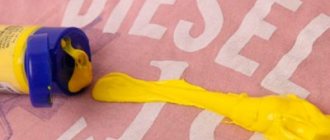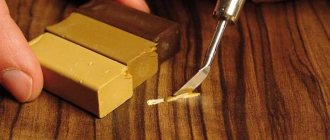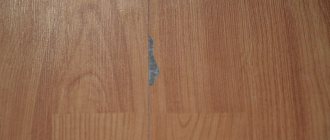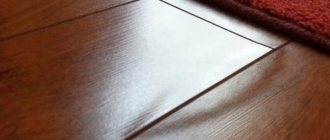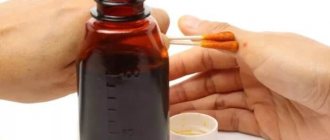Most modern apartments have laminate floors. And this is not surprising, because this flooring is particularly practical, but its decorative top layer requires careful handling. It is quite difficult to ensure this during indoor renovations. Therefore, when it runs out, you have to decide how to wash the laminate after repair, and do it yourself and without streaks.
Regular cleaning of laminate flooring plays an important role in its maintenance. But cleaning the floor after renovation is a completely different matter. Typical contaminants are white caps of polyurethane foam, used today in almost all repair work, which stick tightly to the floor. Therefore, after using it, you need to think about how to clean the laminate from traces of polyurethane foam without damaging the surface. A similar problem occurs with traces of dried paint, wallpaper paste or super glue. Often you have to rack your brains to figure out how best to remove superglue from laminate flooring or eliminate a scratch left by special equipment during repairs.
Let's try to figure out how to deal with typical dirt remaining on the floor after renovation.
How to clean laminate flooring from dirt and stains after renovation
Many apartment owners are interested in knowing, especially those who like to see their floors smooth and beautiful, how to wash laminate flooring after renovation so that it shines as before. To achieve the desired result, you need to follow a certain sequence of actions, since it can be difficult to wash stained laminate flooring after repair. The first step is to remove large debris from the floor. Then you should wash the laminate from construction dust, after vacuuming it, avoiding hard-to-reach places.
If you decide to use a washing vacuum cleaner, you should find out in advance how to wash laminate flooring with it, since there are some special features. The fact is that not all models of washing vacuum cleaners are suitable for this floor covering. For this purpose, you can use vacuum cleaners that do not scatter water so intensively and have special attachments for quickly collecting it. An abundance of water can cause it to get into the joints between the lamellas and cause them to swell. As a result, the floor will swell and become unsuitable for further use.
Often, after repair work, small scratches and chips remain on the laminate floor, compromising the integrity of the coating. You can cope with such aesthetic defects using wax pencils, mastic or paraffin. However, it is impossible to do this without leaving marks on the surface. First of all, you need to know how to carefully wipe off the wax remaining from wax pencils and paraffin from the laminate. This can be done in two ways:
- Mechanically, by scraping wax from the floor, for example, with a credit card. The use of sharp metal objects is out of the question. They can leave their scratches on the coating. You should also avoid cleaning products with strong solvents or abrasive particles.
- By heating the remaining paraffin or wax using an iron or a regular hair dryer. Simply blot the melted material with a paper towel and wipe the mark with a rag.
In addition to wax crayons, defects in laminate flooring are masked with mastic. For this purpose, both liquid and solid mastic compositions are used. Usually, immediately after repairing the laminate, the remaining composition is removed with a rag, but if for some reason this could not be done and the composition has dried out, then the mastic stain is removed from the laminate with a special mastic remover.
For more information on how to remove scratches and chips on laminate flooring, read the article “Removing scratches and chips on laminate flooring with your own hands.”
Although such a method of finishing premises as whitewashing is used extremely rarely today, some still whitewash the ceiling. After such repairs, they have to think about how to clean the laminate from white deposits. And it’s not at all difficult to do. It is enough to wet a cloth in water softened with vinegar or citric acid. Then wipe the floor with a well-wrung out cloth. Then rinse it in clean water and wipe the floor covering again.
By the way! It is better not to try to wash laminate flooring with plain water. Although this is possible in principle, the fight against divorce can take a long time. The water will soon become cloudy due to whitewash particles, which will lead to the formation of new stains.
The spot is more than a day old
It is quite problematic to wash off an old mark from acrylic. A regular detergent will not be able to cope with the stain. In this case, they resort to stronger means of organic and inorganic origin. There are special liquids that dissolve acrylic. If they are not available, it is recommended to use an alternative in the form of gasoline, acetone, nail polish remover (it should be acetone based) or white spirit.
To wash off acrylic paint, you need to wet the stain several times at intervals of 5-10 minutes. The total “soaking” time is approximately half an hour. After this, the painted layer is rubbed off with a sponge or brush. Sometimes this procedure has to be repeated twice.
When working with aggressive liquids, use gloves, a mask and safety glasses. Work should be carried out outdoors or with an open window.
In addition to the standard techniques described, there are other suitable methods. An individual approach depends on what material was soiled. For example, scraping or heating can help remove acrylic stains.
How to clean paint after renovation
When painting various surfaces (walls, ceilings), at least one drop of paint will certainly fall on the floor covering, no matter how you try to cover it with plastic film. It is no coincidence that one of the frequently asked questions is how to remove paint from laminate flooring?
It is easiest to wash it off as soon as it hits the floor and does not have time to dry. This can be done with a simple dry cloth. If the paint has dried, solvents may be required to remove it, depending on the type of paint.
Drops of water-based paint on the laminate can be removed simply with a rag soaked in water. If the paint has dried sufficiently, then it must first be soaked by placing a wet cotton swab on top for a few minutes.
Important! Make sure that water does not get into the joints of the laminate panels. This may damage the floor covering.
Dried acrylic or oil paint dissolves well with organic solvents, in particular white spirit or paint thinners. But you should not try to dissolve the paint by pouring solvents on it. Simply moisten a cotton pad with it, leave it on the stain for a few minutes and then wipe the surface.
Those who don’t know how to remove dried polyurethane foam from laminate flooring can also do the same.
Removers
Construction supply stores sell special removers. Universal products and those designed for acrylic dyes are suitable. It is better to work with these potent substances with gloves, a mask (respirator) and goggles, as they have a very pungent, unpleasant odor. It takes about 15 minutes to remove the stain, then rinse the area thoroughly.
There are recipes for preparing washes at home. A solution of caustic soda has proven itself well. If you need to get a thick product that will not drain from vertical surfaces, add oatmeal to it.
It will take at least an hour to soften the paint.
How to remove wallpaper glue from laminate flooring
Those who are planning to renovate the walls in their apartment should keep in mind that among the various types of dirt that will have to be washed off, there will be wallpaper glue. This means that you can think in advance about how to remove wallpaper glue from the laminate after completing the repair. Do not forget that if the room has a laminated floor, cleaning of glue should be carried out without abrasives. In principle, their use is not required. The area with dried drops of glue should be sprayed with warm water from a spray bottle and left for a while, and then wiped with a rag. This method is easy to deal with glue stains that have not dried completely.
There is another option for removing wallpaper glue from modified starch. His technique is as follows: dried drops of glue are covered with a napkin, onto which glass cleaner is sprayed on top. The wet cloth is left for 10 minutes, after which it is removed, the softened glue is removed and wiped with a paper towel.
After drying, the wallpaper sometimes comes off the walls, especially at the joints of the panels. For gluing it is very convenient to use instant glue, because it sets very quickly. Drops of glue may fall onto the floor covering. And although it is used quite rarely, it is better to know in advance than to remove the glue from the laminate. The easiest way to solve this problem is with the help of the “Super Moment Anti-Glue” composition. The instructions for it say that it is suitable for removing various adhesive compositions, in particular those made on the basis of polyurethane, which includes moment adhesive.
Choosing a remedy
You can clean acrylic paint from walls and floors after renovation using both professional household chemicals and proven home methods. Let's take a closer look at each group.
Purchased
Undoubtedly, the most effective way to wash acrylic paint is with special wash-off compounds that can be purchased at a hardware or hardware store. We list the highest quality products:
- Chief technologist. The universal remover has a gel consistency. Suitable for cleaning acrylic paint, including façade paint, of any color from wood, concrete, and metal. At the same time, the cost of the product fluctuates around two hundred rubles.
- The paint remover will help to thoroughly clean metal and wooden surfaces. The exposure time is ten to fifteen minutes. The price is about four hundred rubles.
- Prestige. The product will allow you to quickly wash acrylic paint both indoors, for example, from a laminate floor or ceiling, and outside. Suitable for removing other paints and varnishes. Prestige costs about two hundred and fifty rubles.
Expert opinion
Natalya Osadchaya
It is worth considering that the listed household chemicals are quite toxic, so before using them you must carefully read the safety precautions on the packaging.
How to remove polyurethane foam from laminate flooring
The widespread use of polyurethane foam in repair work is partly explained by its excellent adhesion (really tightly) to any surface. But a strong increase in the volume of the foam mass leads to the fact that it often adheres to completely different surfaces with which it is necessary. Drops of polyurethane foam can get on the laminate flooring and removing it from it will be very problematic. It is no coincidence that one of the frequently asked questions on the Internet is how to remove hardened polyurethane foam from laminate flooring. This is really a problem, since the foam hardens quickly, and if the repairs are carried out by workers, then, as a rule, they do not care much about cleanliness.
Before listing ways to clean polyurethane foam from laminate flooring, it should be recalled that it is much easier to prevent it from getting on the surface. Why, before foaming, you should cover the floor with newspapers or polyethylene. If the foam mass does end up on the floor, you will have to quickly choose between two options:
- wipe it off immediately without waiting for it to harden;
- Allow the mixture to harden and then begin cleaning.
Some people believe that it is better not to touch the soft foam mass, as it is easier to remove when it hardens. But in reality this is not entirely true. If you wipe off uncured polyurethane foam, it will not have time to adhere to the laminate, which means that its removal will not damage the surface. You just need to know how to wipe off the polyurethane foam and how to wipe it off, so as not to stain the floor even more.
The sequence of actions is as follows:
- first, the soft mass is carefully rolled with a rubber roller in the direction from the edges to the center; if you roll it the other way around, the size of the contamination will only increase;
- the resulting lump is carefully removed with a spatula; you should not pick it up in your hands, so as not to rack your brains about how to wash the mounting foam from your hands;
- Remaining foam can be easily wiped off with a rag, which should preferably be moistened with foam cleaner or acetone.
Foam cleaner and acetone are very aggressive compounds. Therefore, their presence on the surface of the laminate should be minimal in time.
To be fair, it must be said that there is nothing difficult in removing already dried foam. The work of cleaning the laminate, of course, should be done very carefully in the following order:
- First you need to cut off the frozen drop of foam “at the root”. It is more convenient to do this with a cutter or spatula, setting the blade to its maximum length and bringing it as close to the floor as possible.
- Clean off any remaining foam with a special foam remover.
- Polish the surface with a rag.
The result of cleaning polyurethane foam using any of the above methods depends on how carefully the work is done.
How to remove a stain that is less than an hour old
If little time has passed since the formation of the leak (less than 60 minutes), then there should be no problems with removal. The polymer film has not yet set, so the stain can be removed in a simple way - with soap. On a hard surface, wash the paint with a sponge or cloth napkin.
For a more convincing result, you can hold the soap foam for 10-20 minutes on the dirty area and then rinse under running water or wipe with a clean soft cloth. If the spot begins to dry out slightly and the soap cannot cope, add baking soda to the soap solution.
How to remove super glue
When carrying out repair work, cyanoacrylate second glue, which is usually called superglue, is often used to quickly connect different materials. But its instant hardening creates a lot of inconvenience. For example, when cleaning you have to decide how to remove super glue from the laminate. This is a big problem, since the glue instantly sets to any surface and dries very quickly. There are several solutions for how to remove super glue from laminate flooring.
First aid
If drops of superglue are immediately noticed on the laminate flooring, you can use their liquid consistency. When working with super glue, it's good to have blotting paper on hand (toilet paper or napkins will also work). Its structure contains many small capillaries that provide instant absorption of moisture. In such a situation, you should act immediately. The faster you bring the blotting paper to the drops, the more efficiently they will be absorbed and the greater the chance that the appearance of the coating will not be affected. Remaining traces of super glue are removed using acetone.
Special equipment
Often you have to rack your brains when you find glue drops on the flooring tiles. How to remove super glue from laminate flooring, because it has already set? In this case, you can use a debonder (anti-glue) or, simply put, a super glue solvent. Similar products are produced by most manufacturers of cyanoacrylate-based glue. It goes on sale in one blister with a tube of superglue or as a separate product. Debonder does not dissolve frozen glue drops, but only softens them, turning them into a thick paste. You can easily pry it off and remove it with a toothpick. After this, the cleaned area is wiped using special detergents.
Household chemicals
Many people consider acetone to be too aggressive for laminate flooring. However, when there is nothing else at hand than to wipe off the super moment from the laminate, you can also use acetone. Of course, before using an aggressive agent, it is worth testing in a secluded place: make a smear with acetone and observe the reaction. A less aggressive alternative to acetone is nail polish remover. It is convenient to apply it with a brush to dried superglue and gradually wipe it off with a rag. But this liquid is less effective than acetone.
Medicine from the first aid kit
Most home medicine cabinets contain an anti-inflammatory drug called Dimexide. It is usually used in the form of a solution for rheumatism, bruises, sprains, inflammatory skin diseases, etc. The drug contains a potent chemical called dimethyl sulfoxide. For medical purposes, Dimexide solution is used only in diluted form. However, some people don’t realize that this product can effectively remove superglue from laminate flooring. It is enough to moisten a cotton pad with the solution and rub it on the adhesive stain. If it doesn't come right away, you can leave the cotton pad on the stain for a few minutes and then scrub off the super glue again.
Mechanical removal
This method of removing superglue can only be used for small drops. Before mechanical removal, the stain is usually treated with the same Dimexide to soften the dried adhesive mass. After which it is carefully cut off at the very surface. The cleaned area is carefully rubbed with a laminate care product.
Chemical method
To get rid of stains chemically, cleaning products containing active chemicals are used. The most commonly used products are acetone, paint thinner, and other products that contain alcohol.
Important! However, these agents should be used with caution. If a small stain occurs, you need to pour a small dose of the product onto a sponge and rub it over the surface with smooth movements.
What not to do
The laminate coating itself is quite durable, but it should be handled with care so as not to damage the top decorative layer. Therefore, it is better to avoid certain actions in order to preserve the beautiful appearance of the floor covering. You should avoid the following:
- use of alkali-containing and acid-containing detergents;
- use of powders with abrasive particles;
- do not use sharp objects when cleaning various contaminants;
- excessive moisture during cleaning.
From all of the above, we can conclude that all problems with contamination of laminate flooring can be solved, but it is still better to prevent their occurrence. Therefore, before starting repairs, you should try to cover the floor surface as much as possible. In addition, it is worth taking care of purchasing cleaning products in advance to keep them on hand. Then you most likely won’t have to deal with the consequences of the repair.
And it is also important to remember that in order to have fewer problems with removing contaminants, you should try to catch the moment and wash the laminate while the apartment is still being renovated, because the fresher the contaminants, the easier they are to remove.
Advantages of emulsion compositions
Water-based paint is an emulsion of water, dye and polymers that act as mixture stabilizers. The particles do not dissolve in water, as in a classic solution, but are suspended.
Water-based and water-dispersion paints are similar in that their main component is water. These finishing materials have the same scope of application and similar properties.
The emulsion composition has the following advantages:
- the mixture is absolutely harmless to human health;
- dries completely in 2–3 hours;
- there is no sharp specific smell;
- you can get the desired shade by adding pigment;
- easy to apply to the surface;
- instruments are washed with plain water.
Among the disadvantages of this painting material, it should be noted that it has a limited scope of application. It is only suitable for interior work, as it can dissolve when exposed to rain or snow.
However, it is precisely this drawback that can be considered as an advantage when a bucket of water-based emulsion is accidentally overturned on new linoleum or parquet. After all, it won’t be difficult to wash off water-based paint, especially if the stain appeared recently.
Removing stains with a spatula
Dried water-based paint can be cleaned off with any metal scraper or construction spatula. The method is suitable for removing paint material from hard surfaces that are difficult to damage with an iron object. This way you can remove stains from concrete and brick walls or completely remove the old layer if you plan, for example, to cover the walls with wallpaper.
Cleaning is carried out in several stages.
- If you need to remove paint from the entire surface of the ceiling or wallpaper, cover the floor and furniture with plastic film or paper.
- The old paint is moistened generously with warm water. To do this, you can use a roller, sponge or washcloth.
- Wait 20-30 minutes until the layer is completely saturated with water and swells well.
- Carefully remove particles of paint material with a spatula.
If it was not possible to clean the paint completely, you need to wet the surface again and repeat the procedure.
We recommend: How to clean hair and dirt from your favorite comb
We clean carpets
To clean carpet from hair dye, use food, pharmaceutical and chemical products designed for cleaning colored fabrics.
Start cleaning the carpet immediately, because it is problematic to wash such a product of paint.
- Apply the solution to the stain.
- Let the stain sit.
- Scrub with a toothbrush.
- Wash off any remaining paint along with the dissolved paint.
To enhance effectiveness, combine products at your discretion.
Using a grinder
If a thick layer of old dried paint cannot be removed either with a soap solution or an industrial remover, you will have to remove it mechanically. To do this, you will need a sander or a regular drill with a paint stripper attachment.
All work with a grinding machine must be carried out wearing a respirator.
The cleaning method is suitable for wooden, brick and concrete surfaces. The entire area of the floor, wall or ceiling is divided into small squares and the selected zones are treated one after another. After the paint has been removed, you need to ventilate the room, vacuum the furniture if it remained in the apartment, and do wet cleaning.
Recommended: Is it possible to boil filtered water?



